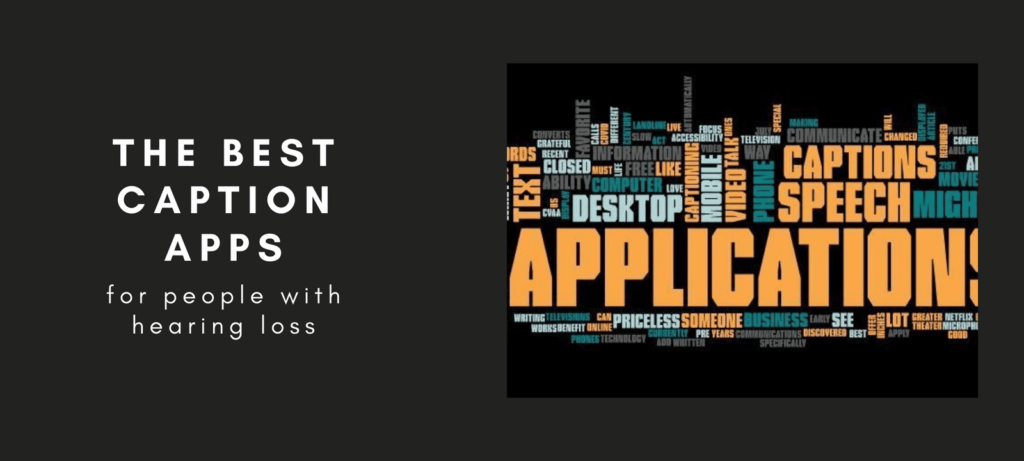For the regular-hearing person, the 21st Century Communications and Video Accessibility Act (CVAA), which required all televisions with screens 13-inches or greater to display closed captioning by July 1, 1993, changed next to nothing in their television-watching experience. For people like me (those with hearing loss), however, our lives improved greatly.
In recent years, movie theaters must now offer closed captioning. Pre-COVID-19, treating myself to a movie (and actually enjoying it), was no longer the difficult undertaking it used to be. These laws eventually extended to Netflix, an online-only business, which has become one of the predominant movie providers in this day and age. It has been a slow process over the last 30 years, but technology is finally making it easier for those who benefit from captions.
Captions are not just limited to television and movies, though. They can also be displayed on special landline phones, live video conference calls, desktop computer applications, and mobile phone applications. While most people are aware of TV and movie captions, many (even people who need them) are unaware of the available speech-to-text applications, especially on mobile phones and desktop computers.
Speech-to-text applications convert speech to written words on a screen. Using a microphone, speech is automatically translated into writing in real time. Many of the applications work well and are free to use, but you might have to try different ones to see what works best for you.
If you have difficulty following someone who is a soft speaker or wearing a mask, these applications can help with that barrier. They can also be used even if you can hear most of what someone is saying, but you do not want to miss out on a keyword. They can be very helpful at an important meeting or a physician’s office, too.
Some speech-to-text applications also work on a desktop computer. My favorite way to communicate with family, friends, as well as in business meetings is to use video communications on the desktop or mobile phone. The ability to see a person’s facial expressions and lips while they talk through the video camera is very valuable to my comprehension.
The best way to learn what works is to try out some of these speech-to-text applications yourself. The graph below categorizes these complex and intriguing inventions for your convenience, so that you may know the best ones to try. I have only focused on the free applications in this graph. However, there are a lot of costly applications as well. If you would like more information, please email: [email protected]
Apps for Video Calling: Zoom, Google Meets, Microsoft Meetings, Skype, Facebook Messenger, GoogleDuo, Facetime…the list is long! Although video calls are amazing, oftentimes their captioning is difficult to locate and figure out, if they have the feature at all. While desktop applications would be useful when video calling (since you are already using your computer), some desktops will not cooperate with both speech-to-text and video calling applications at the same time. In these situations, setting up your mobile phone or tablet in front of your computer screens may work the best.
Here are three pictures of different set-ups I have using captions. The first set up is a desktop computer. A YouTube video is on the left side of the screen. On the right side of the screen is another window with the Otter application. Otter is transcribing the speech from the YouTube video. In this setup I read the captions being transcribed off the desktop in the right window.

The second setup shows a desktop computer with a YouTube video on the big screen. A mobile phone is sitting in front of it transcribing the speech from the YouTube video that is displayed on the desktop. The mobile phone is using the same Otter application to transcribe. In this setup I read the captions off the mobile phone.

I also use the mobile phone alone with the Otter application to transcribe speech-to-text wherever needed. If there is any difficulty understanding speech I click on Otter!

The third setup pictured is at the office. There is one computer, and two monitors. There is a microphone (circled) that picks up our speech which is being transcribed to text by the same Otter application. The speech is displayed the same on both computer monitors.
I recently discovered a setup by Hamilton Captel for those who communicate with Zoom. You can use your CapTel phone to call into a Zoom meeting, as you would with any other phone, and get the benefit of reading captions during the call. If you would like a CapTel phone email [email protected]. They are no charge through CapTel, and their website can be found in the application table above.


One of the best caption experiences I ever had was my visit to Broadway in New York City two years ago. I called ahead of time to ask about assistive devices, and they set me up. The piece of equipment around my neck is an infrared system. An infrared system is an assistive device that transfers the sound without the use of wires, just like how our TV remotes work. The sound was transmitted from the infrared necklace to my hearing aids. I could not believe the quality of the sound! The small lighted box I am holding is the device that delivered the speech-to-text captions from the show, in real time. The entire Broadway show script was delivered right to that little caption box. With these two assistive devices, I understood the entire show! I was no longer ‘sitting in the dark’, I kept up with the play as well as everyone else.
You deserve to hear and understand whatever event you are attending. So, don’t be shy. Call ahead of time to see if the theater, concert, or show you are attending has assistive devices for those who need a little help hearing and understanding.





